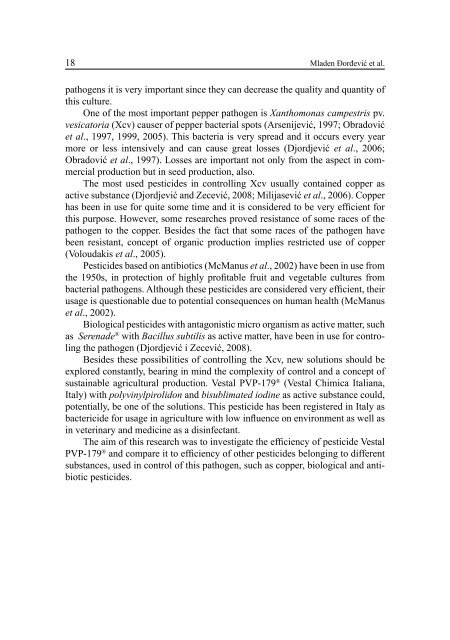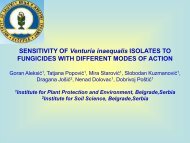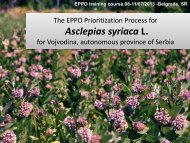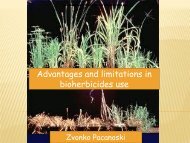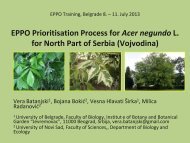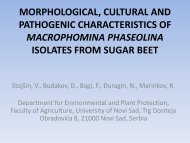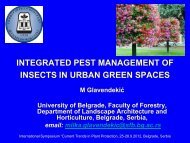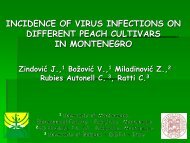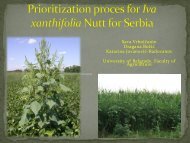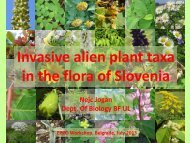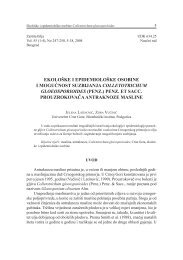ZAŠTITA BILJA PLANT PROTECTION
Vol.62 (1) - Izbis
Vol.62 (1) - Izbis
- No tags were found...
You also want an ePaper? Increase the reach of your titles
YUMPU automatically turns print PDFs into web optimized ePapers that Google loves.
18 Μladen Đorđević et al.<br />
pathogens it is very important since they can decrease the quality and quantity of<br />
this culture.<br />
One of the most important pepper pathogen is Xanthomonas campestris pv.<br />
vesicatoria (Xcv) causer of pepper bacterial spots (Arsenijević, 1997; Obradović<br />
et al., 1997, 1999, 2005). This bacteria is very spread and it occurs every year<br />
more or less intensively and can cause great losses (Djordjević et al., 2006;<br />
Obradović et al., 1997). Losses are important not only from the aspect in commercial<br />
production but in seed production, also.<br />
The most used pesticides in controlling Xcv usually contained copper as<br />
active substance (Djordjević and Zecević, 2008; Milijasević et al., 2006). Copper<br />
has been in use for quite some time and it is considered to be very efficient for<br />
this purpose. However, some researches proved resistance of some races of the<br />
pathogen to the copper. Besides the fact that some races of the pathogen have<br />
been resistant, concept of organic production implies restricted use of copper<br />
(Voloudakis et al., 2005).<br />
Pesticides based on antibiotics (McManus et al., 2002) have been in use from<br />
the 1950s, in protection of highly profitable fruit and vegetable cultures from<br />
bacterial pathogens. Although these pesticides are considered very efficient, their<br />
usage is questionable due to potential consequences on human health (McManus<br />
et al., 2002).<br />
Biological pesticides with antagonistic micro organism as active matter, such<br />
as Serenade ® with Bacillus subtilis as active matter, have been in use for controling<br />
the pathogen (Djordjević i Zecević, 2008).<br />
Besides these possibilities of controlling the Xcv, new solutions should be<br />
explored constantly, bearing in mind the complexity of control and a concept of<br />
sustainable agricultural production. Vestal PVP-179 ® (Vestal Chimica Italiana,<br />
Italy) with polyvinylpirolidon and bisublimated iodine as active substance could,<br />
potentially, be one of the solutions. This pesticide has been registered in Italy as<br />
bactericide for usage in agriculture with low influence on environment as well as<br />
in veterinary and medicine as a disinfectant.<br />
The aim of this research was to investigate the efficiency of pesticide Vestal<br />
PVP-179 ® and compare it to efficiency of other pesticides belonging to different<br />
substances, used in control of this pathogen, such as copper, biological and antibiotic<br />
pesticides.


